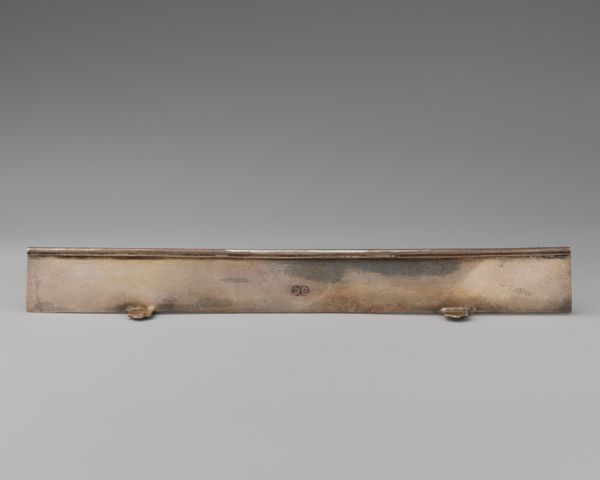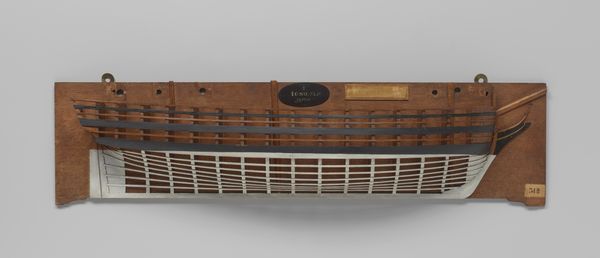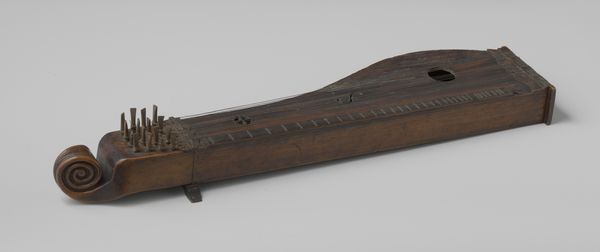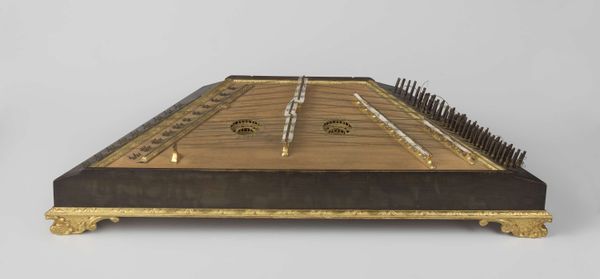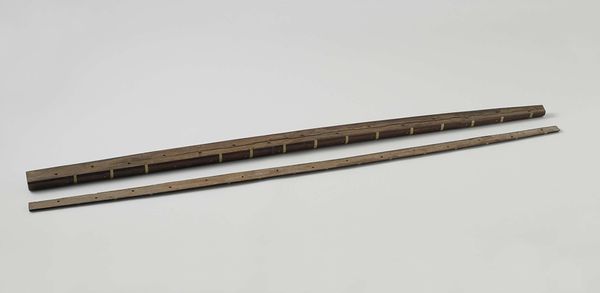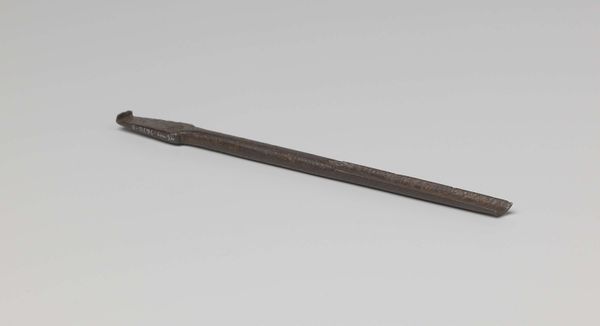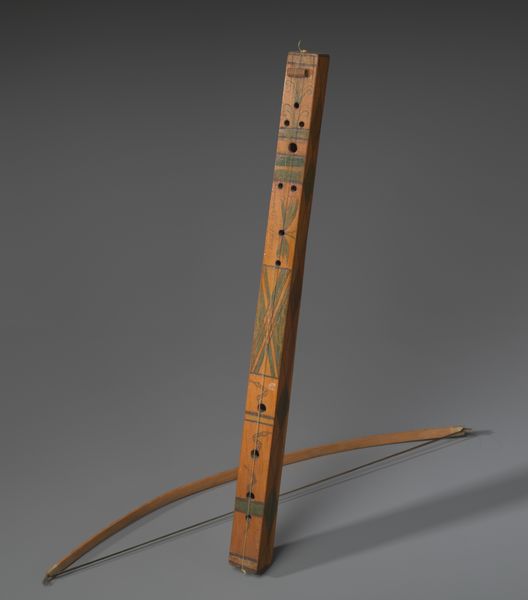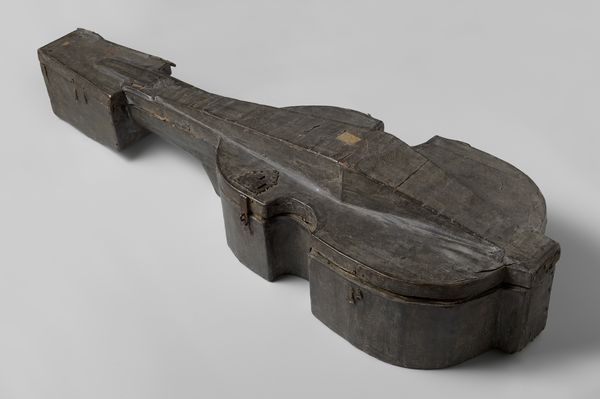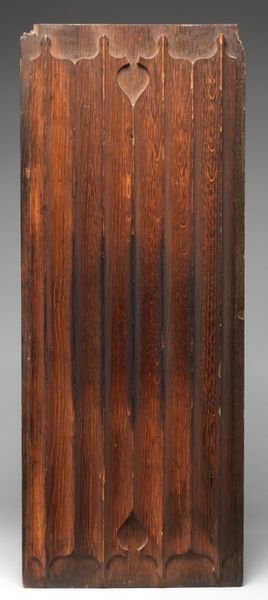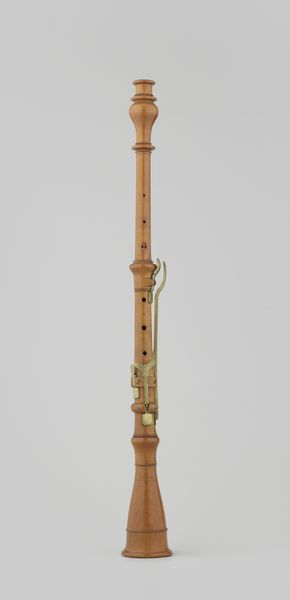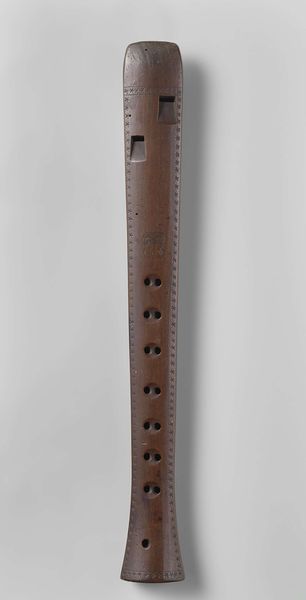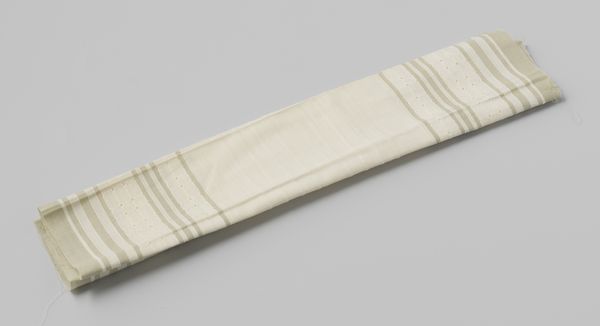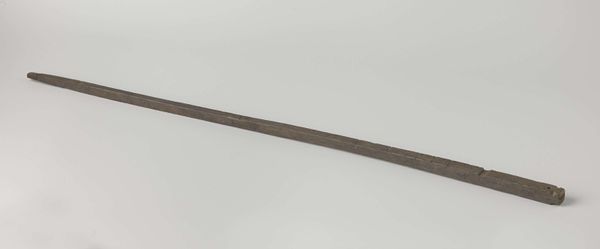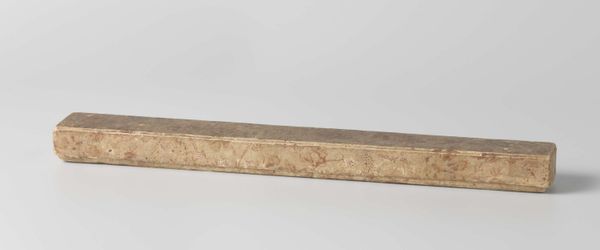
wood
#
sculpture
#
asian-art
#
22_ming-dynasty-1368-1644
#
men
#
china
#
wood
#
musical-instrument
Dimensions: W. 10 1/2 in. (26.6 cm); D. 4 1/4 in. (11 cm); L. 46 5/8 in. (118.5 cm)
Copyright: Public Domain
Curator: This artwork before us, dating back to 1634 during the Ming Dynasty, is titled "Qin". It resides here at The Metropolitan Museum of Art. Editor: It's arresting, the austerity of it. That aged wood and those subtly placed markers – a somber elegance. What more can you tell me? Curator: It's attributed to Prince Lu, of significant political sway during his era. Constructed of wood, it's a ‘qin,’ a traditional Chinese zither. Such instruments played a pivotal role within the cultured elite of the period. They stood as a representation of artistic refinement and erudition. Editor: A qin… Crafted wood is always intriguing to me. Given its context and the status of its creator, Prince Lu, the access to quality materials and craftsmanship would've been readily available. What specific sorts of wood are we talking about, and how might that affect both its sound and its cultural worth? Curator: Excellent question! It’s often made with varieties prized for their tonal qualities and resistance to warping. The crafting process was certainly complex. More than simple assembly was required; the maker ensured its voice was not only beautiful, but true to its societal role of cultural sophistication and expression. Its association with scholars and the imperial court adds an extra layer of meaning. Editor: Exactly, the layers of construction hint at so much social stratification and artistic decision making. We see material culture meeting royal authority! I'm imagining the careful selection of lumber, perhaps even from groves controlled directly by royal mandate? Curator: It speaks volumes to the value placed on scholarship and the arts during that time. The symbolism within its form is significant as well. Editor: Its sheer presence blends aesthetic principles and refined labor together in a way that encourages deeper questioning concerning the history and craftsmanship of musical forms during the Ming dynasty. Curator: Absolutely. “Qin” serves as a poignant illustration of the intertwined history of art, social standing, and cultural meaning embedded in Ming Dynasty China. Editor: This careful articulation of material selection and design underscores the intertwined relationships of production and value during Prince Lu's time. Fascinating to reflect on!
Comments
No comments
Be the first to comment and join the conversation on the ultimate creative platform.
